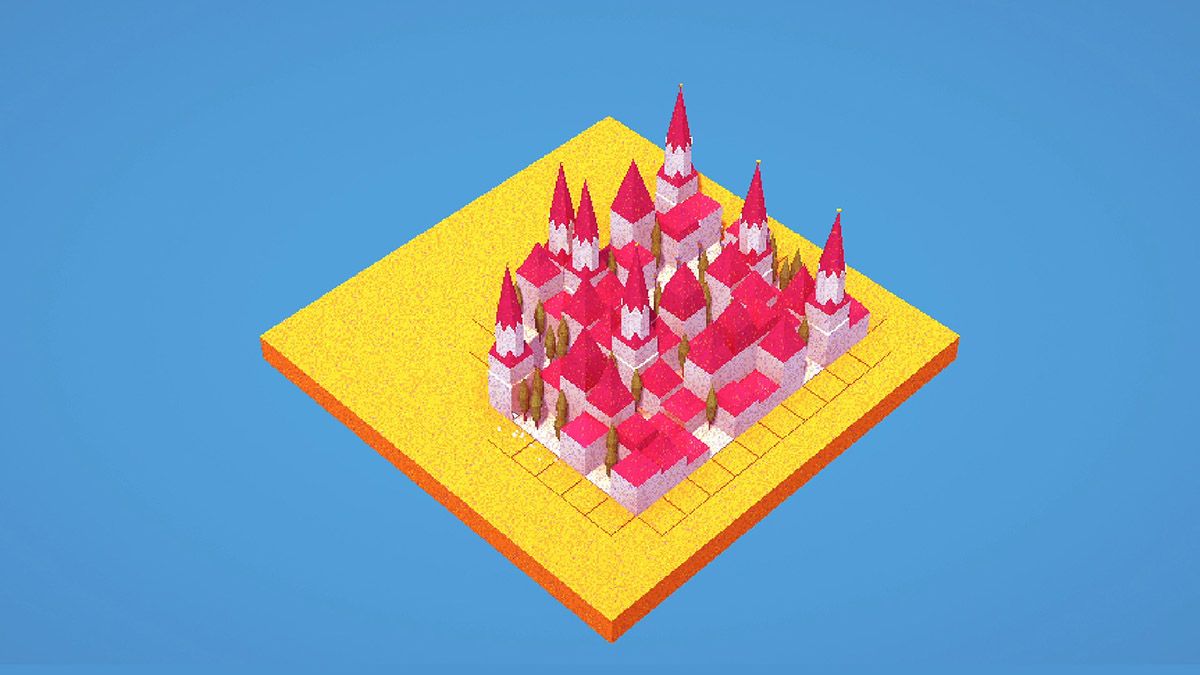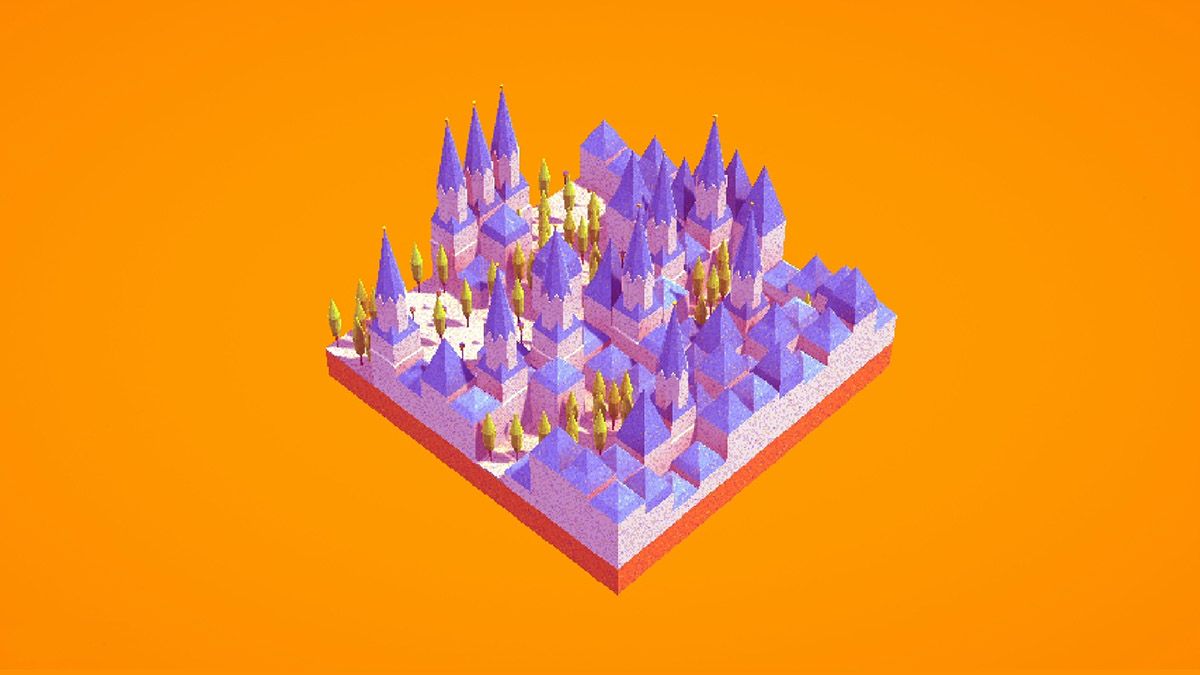As is so often the case in past years' showings, the Leftfield collection at EGX (and its Rezzed sibling) so often houses games and releases of a more experimental nature, shall we say. Games that may not necessarily be substantial or long-lasting experiences -- those that may even arguably have a looser definition of entertainment in favor of more hopefully educational intentions. At the very least, the banner of "left-field" is a fitting jumping-off point, if not wholly reflective of the kind of games one can naturally stumble on, be drawn to and in rarer cases, find genuine enjoyment from. It's one thing to showcase a creation that may well be unconventional -- be it at the risk of some substantial, potential playerbase or otherwise -- it's another to do so while drawing on personal, more fond memories of yesteryear.
Dabbling in the minimalist, grid-based building structure of The Block, my mind immediately flashed nostalgic visage of days of yore as a kid. Sitting by the greyest of box-monitor computers, spending way too much time playing the late-90s/early-2000s entries in the Command & Conquer series. Not because those games didn't justify their lengthy investments (they most certainly did), but because of one's own decision to spend way too long a time with that game's base-building mechanics in totality for ludicrous ends. To the point where, equally ridiculous as this will sound, in 1999's Tiberian Sun, I would deploy one of the game's super weapons to flatten some of the terrain. My reason: so I can keep building connecting fortifications, gates and the like. And with a game like Red Alert 2? To see just how well organized or eloquently arranged I could make my starting and forward-operating bases alike. It would be a stretch to say these are the direct inspirations for developer Paul Schnepf's The Block, but I too would be lying if I said I didn't experience a similar amount of voluntary obsession with something as basic as grid layout. In a game with much simpler, straight-forward and short-term intentions.
An intention that from the looks of things is completely devoid of narrative and end-goal alike. Pick a grid size, off you go and build until there's no space left. When you're done, reset and go again. The only conundrum thrust in a player's progression being what random assortment of objects one can choose from to place down on a selected square. The Block's total amount of variety around a dozen choices that range from trees, lamp-posts and differing heights of architecture. But other than the basic ability to rotate, this is where the depth ends. A shallow offering that may sound, but that aforementioned random handful of what one can put down is where The Grid rustles up enough strategy and deduction for the real investment and resulting charm to flourish. Soon after, that simple loop of plotting down towers and trees becomes a voluntary mind-game on how elaborate or uniform you desire the layout to end up.
After all, there is no absolute control in what's provided to you at any one time. Meaning the meta-game, if you will, is entirely down to how much you want to rely on that ideal piece coming up. The risk is of course minimal given how quick you'll make your way through the total amount of options in a handful of turns. But for a game of this stature, it's enough of a variation for that novel self-made objective to feel enticing. And given one's personal obsession with balance and equilibrium, making sure that a bunch of trees or a park bench were positioned at precisely the right spots, The Block may have the gentle ease in its low-poly aesthetic to imply this as more a winding-down type of game, but it's hard not to inject some sense of challenge and objective into such short bursts of play.
But scouring left-field collections usually end in such short-term, compact moments. Moments that may not look or feel substantial, or functioning under the stress of many an interlocking mechanic, but can still provide an alternative in a world where more games seem to be going the way of the service-styled, never-ending grind. So the fact that The Block can not only offer a respite from all that, but do so in a way that still invites that voluntary engagement, turns this novel little idea into an enjoyable one. As basic and as short-lived the core loop is. As limiting one's response may be once all the spaces are filled and it's onto to deciding whether to start all over or not. But that's besides the point with a game like this; it was surprising to look back and recall how long one can truly spend amid The Block's near-meditative, low-poly grids. For such a small, short, to-the-point pitch of a game, The Block is an easy one to get lost in.



